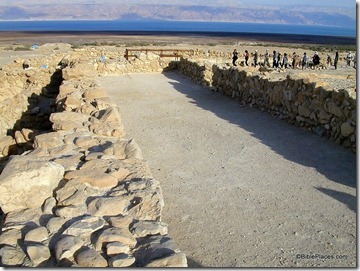A new study using “social archaeology” concludes that the traditional view that the inhabitants of Qumran were Essenes is “extremely plausible.” From the Biblical Archaeology Society:
By physically dividing up and demarcating spaces—walls, doorways and entrances that are used on an everyday basis—the architecture thereby classifies and controls the movement of people and the spaces they inhabit. Studying these spaces can help archaeologists answer the question, “Who were the Essenes?”
In a detailed analysis of the physical spaces of the Qumran community, [Eyal] Regev finds the occupied area is divided into different space segments, “each connected to a controlling central passage with minimal connections between segments.” The spaces within segments are also “minimally connected.” Access to most spaces is therefore “limited, and several boundaries must be crossed to reach most spaces from any starting point on the site.”
The large rooms (such as the dining room and the so-called scriptorium) used by the Essenes of Qumran “were not easily accessible and were out of view of casual entrants.” This, says Regev, means that “social encounters between the inhabitants were quite uncommon.”
The full report is here.
HT: Daniel Wright
